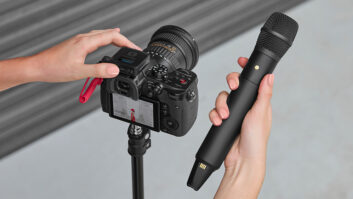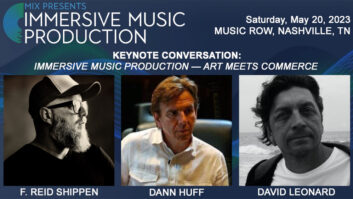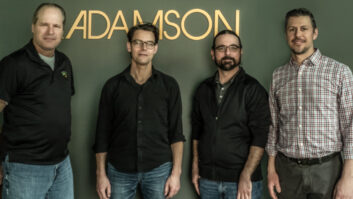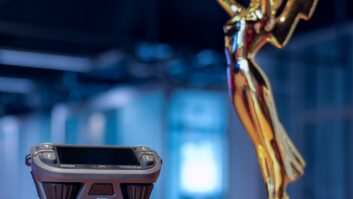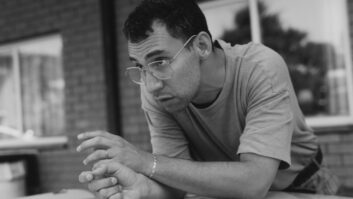I am writing an article about “modern” craftsmanship relative to what are considered classic microphones. What differences do you see between then and now?
Keep in mind that a C12 or U47 sold for $600 to $800 in 1960 and would probably have to sell for more than $15,000 in today’s market, the way the value of money has gone down and companies’ expenditures on marketing and sales infrastructure have increased. People don’t want to spend that kind of money. Modern knowledge and technology goes toward making things more cheaply. Many companies choose to do that in order to maximize their sales volume, which is the most important to them. We have made a different choice and choose to push modern technology toward making better mics.
Does your company do specialty work that might fall outside the category of “audio recording gear.”
We do consulting, generally in special applications of microphones, mostly for applications other than speech and music. We usually do a few of these of these projects a year. It helps to keep our chops up and our skills current. Microphone and OEM capsule manufacturing definitely comes first though.
Can you list approximately how many capsule styles you make in-house?
Right now, its six on a production basis (models 11, 12, 22, 37, 42, 550) plus variants, and lots of others that we have made experimentally.
Does in house mean entirely?
Three are entirely 100% from scratch: Models 11, 12 and 37. The e22S has one important outside part. The C42 capsule is a mix of OEM and in house parts as is the C550. We always do all of our own final assembly and testing.
What sort of things are outsourced? (I understand you’d want to keep your suppliers confidential.)
We have most of our PC board assembly done a few blocks away, leaving any critical assembly to be done in house. Most of our machining is done out of house, mostly within a 30-minute drive. Today, this involves six different precision machinists, each of whom does something they do really better than anyone else – and none of them makes microphone parts for anyone else. We don’t do our own plating either. In most cases, we actually have a good face-to-face long term working relationship with our manufacturing partners.
How many people on staff do tech work?
Five of the six people who work here
You do all your own testing?
Yes, we have a significant amount of equipment for thorough testing here—acoustic, electronic, RF and mechanical. We take our testing very seriously. If a customer buys any of our microphones, we want them to be able to buy another of the same model that is functionally the same at any later date without worries. No one can reliably provide that without good testing facilities, and a thorough understanding of the underlying physics.
David Josephson has been the chair of the AES Standards Committee Working Group on Microphone Characterization since it was started in 1996, and that’s the only group that is pushing the envelope on microphone testing. There are about a dozen serious pro audio microphone makers in the world, and nearly all of them actively participate in this group, trying to understand testing and characterization a little better. We learn a lot from each other—we’ve done a couple of “round robin” tests where we send our products around to all the other manufacturers to see we get comparable results. The situation is improving.
Who do you particularly respect in the world of microphone designers?
Josephson: Edward Wente (Bell Labs, 1917, invented the condenser microphone) and the group at AKG that developed the CK12. We really don’t know exactly who this is. The 1954 Austrian patent doesn’t mention any names. Some accounts mention Konrad Wolf, certainly Dr. Rudolf Göricke was involved, some other accounts mention “two Siemens engineers,” and I think Bernhard Weingartner, subsequently founder of Neutrik, developed the most-admired version of the capsule.
Kay: I concur. The original CK12 team is my #1 choice given where they fit in the scope of achievement and where they sit on the time line.
Pet peeves?
Not really a peeve, but a frustration—people are sometimes very focused on picking the right microphone for the task, and of course we’re happy to teach them why ours would be the best choice (except when it’s not). But too often, people have unrealistic expectations of what a microphone can do, when they would be better off-putting energy into improving their playing or their acoustical environment. We’ve all tried to make good recordings in un-improvable places, though, so we feel their pain.
Learning a little bit about acoustics and perception is difficult, and very important. We devote four times more brain power to acoustic processing than we do to visual processing, and the idea that you can trick the brain into being part of a reproduced acoustical experience with just two or even 5.1 electronic channels with speakers is really a leap of faith. If people understood what they wanted microphones to do just a little better, it would make them more knowledgeable microphone users.
